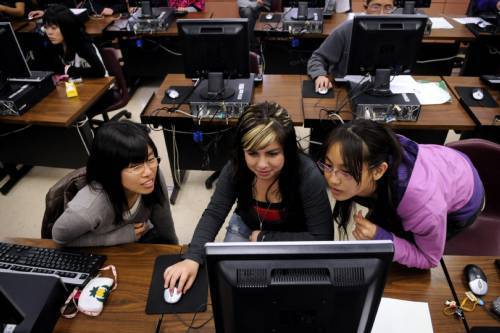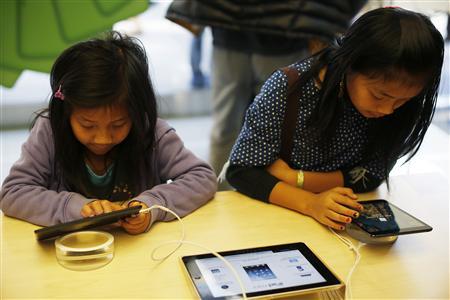Developments in the direction of a more technology-focused and multimedia approach to education demonstrate a correlation between an online learning environment and performance improvement. How is multimedia as an educational tool trending toward permanence in the academic landscape?
Social Apps
Multimedia devices that have interactive learning and entertainment apps can connect instructors and students outside formal digital academic communities. Vine, Instagram and other multimedia platforms can give students and teachers the opportunity to interact in fun and interesting ways. Video platforms provide more dynamic teaching and learning relationships facilitated in ways never before envisioned in the more traditional brick and mortar educational milieu. The creation of educational apps is a lucrative trend with more mobile choices offered for both students and teachers. For example, the Oxford Picture Dictionary is a full 4,000-term dictionary you can access anywhere. School Fuel is another app teachers can use to connect with students remotely to answer student questions and give guidance.
Why Digital Learning?
As online education becomes more prevalent, multimedia and digital concentration will also increase in use in accredited postsecondary programs. For example, those who pursue an Early Childhood Education degree online at Penn Foster can experience the following advantages:
- It’s cheaper—73% less than an average online or traditional institution.
- It’s practical. Knowledge and skills for promoting language and literacy development and activities that are mentally and physically stimulating are applicable for a prosperous educational career.
- It’s flexible and convenient. Learn at your own pace while you fulfill other responsibilities.
- It’s a stepping stone. Skills (and credits) are transferrable, which is helpful as you progress.
It’s becoming clearer that your ultimate success is contingent upon your familiarity with the basics of video, multimedia presentation and communication. With these education programs, you’re just beginning to explore the tip of an ever-expanding monolith in technology, something that you may decide to pursue in more depth in the future.
Joys of Learning
Let’s face it, there’s a significant amount of book learning in any educational program. It doesn’t have to be dry, boring or fraught with colorless ambiguity. The multimedia element in education is a way to incorporate your life into your learning process, and then encourage your future students to do the same with their own personal experiences. It’s a way to put your passion back into education, colorize the frames in all the sessions and engender a more dynamic and diverse atmosphere than you may have ever thought possible.
Teachers who incorporate different platforms in their process will have a better chance of engaging students. Multimedia classrooms also hold students accountable, keep curriculums organized and offer greater opportunities to learn and apply.
Antonio Maurice Daniels
University of Wisconsin-Madison
Related Articles
- Internet -Based Multimedia Resources for Online Learning (katrinahillblog.wordpress.com)
- My Thoughts on Muti/Hypermedia (klewisblog.wordpress.com)
- Week 4 Assignment:Blog Assignment:Interne-Based Multimedia Resources for Online Learning (larryb93138.wordpress.com)
- Importance of Technology in Education (gladysabian.wordpress.com)
- Portable multimedia creating a classroom outside of the classroom (mandellj2150.wordpress.com)
- Benefits Using Multimedia in the Classroom (jglhdc.wordpress.com)
- Technology Shifting Teaching Methods (jglhdc.wordpress.com)

